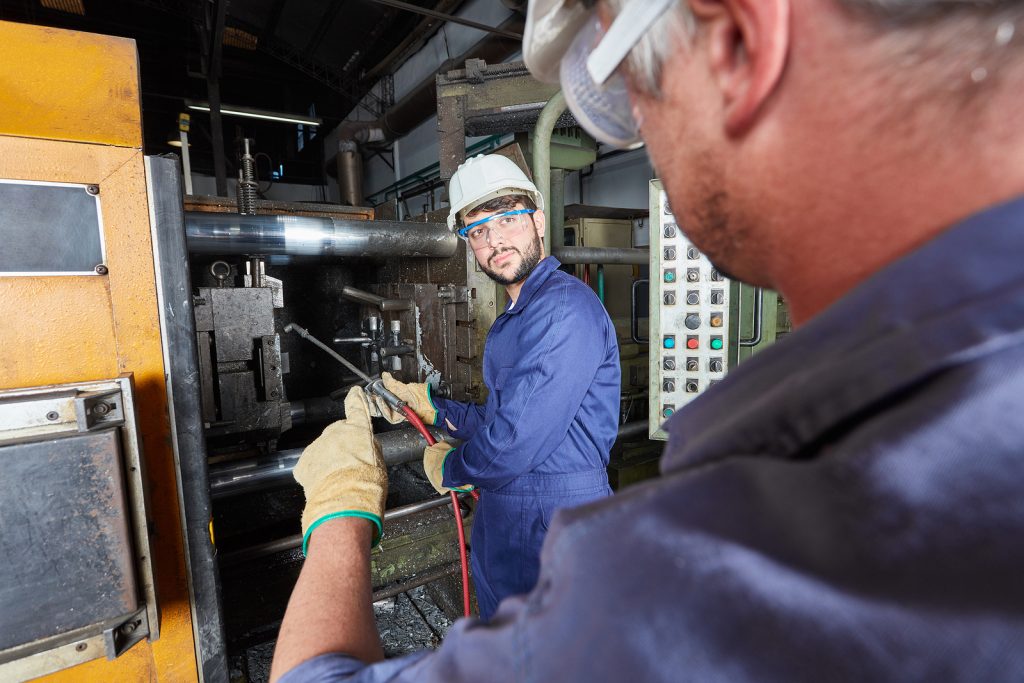Sand castings are the most common type of molding and come at the lowest tooling cost. Molten metal is poured into a disposable sand mold and allowed to cool, giving you a metal casting. Sand is less expensive and very affordable to form so it is broken down and recycled after each use. Sand castings require thicker walls on castings to feed metal and in some variations, the finish is not as high as other processes. Sand castings can be used in ferrous and non-ferrous materials, making it a very versatile process.
Types of Sand Casting
- Green sand molding
- Green sand molding utilities mixture of silica sand, clay, combustibles, and water. It uses a high pressure molding machine to give the best accuracy and finish. Generally, green sand molding is the most cost effective with automated equipment.
- Buchanan still represents facilities that offer squeezer molding, a type of green sand molding, however our representatives will only direct you to this option if we think your parts will best work with this method as it comes at a higher cost with a lower finish and volume yield.
- No Bake (Airset) molding
- For no bake molding, sand is mixed with one or two liquid resins to create the mold. When the sand is ready to be placed in the molding flask, a catalyst is added to the sand mix to harden the sand. A variety of pattern materials can be used and no bake molding offers good dimensional tolerances. Depending on the mold coating used, no bake molding can also yield a good finish. Casting size for no bake molds is limited by the size of the molding flask.

